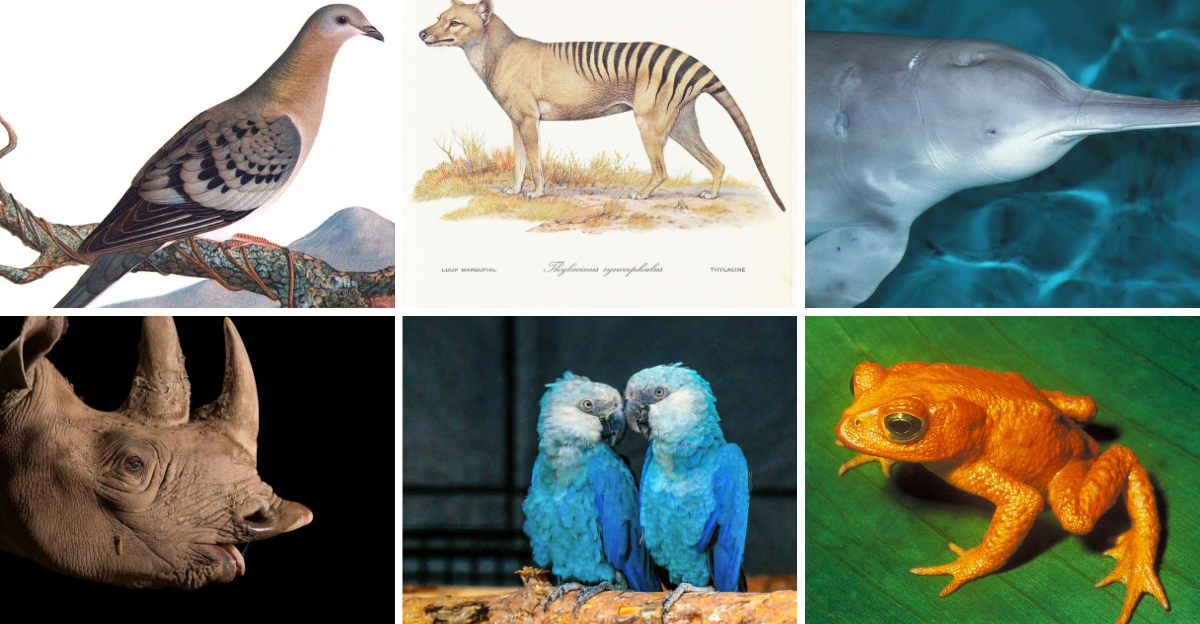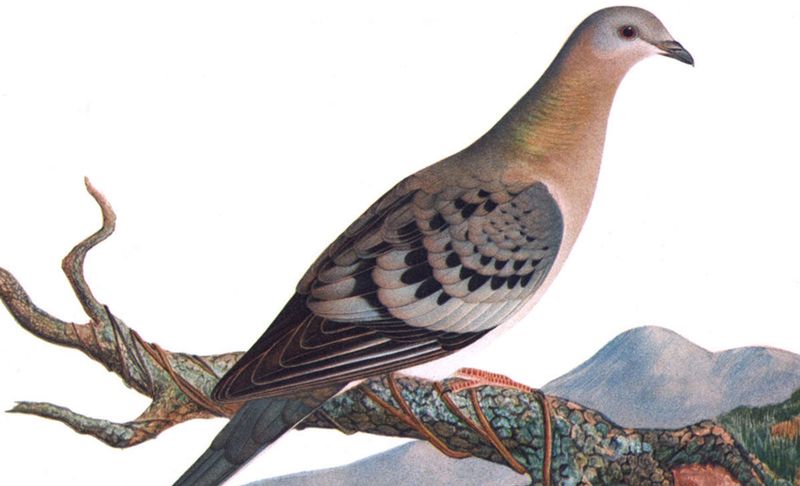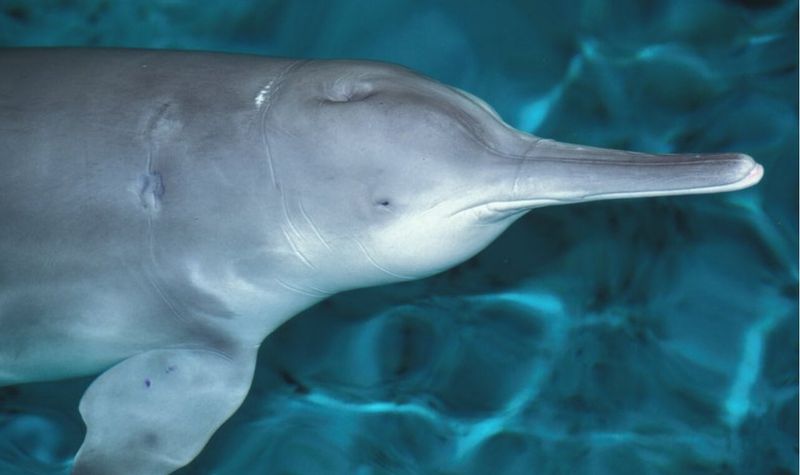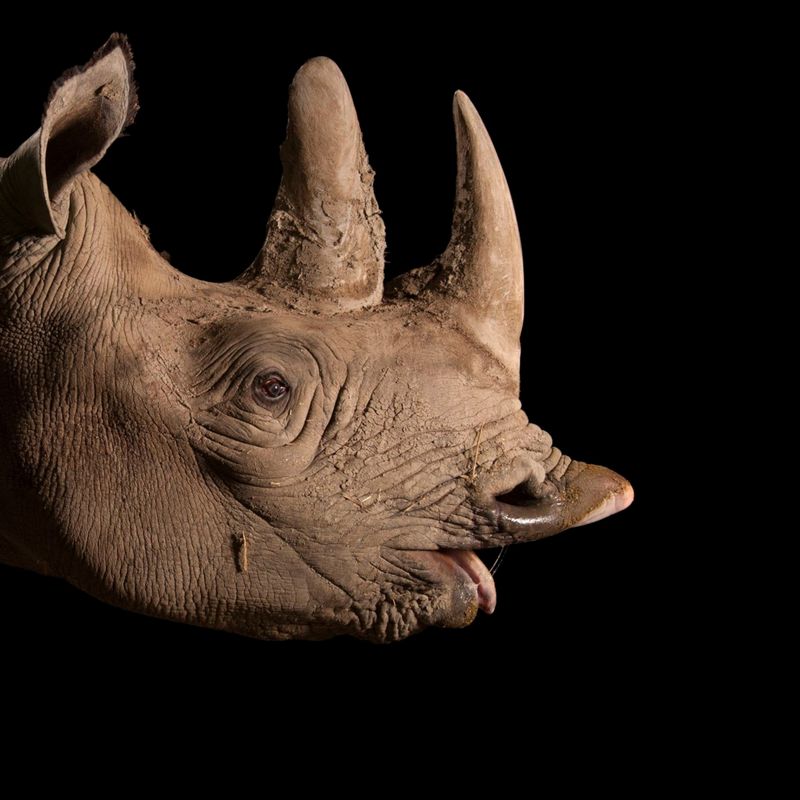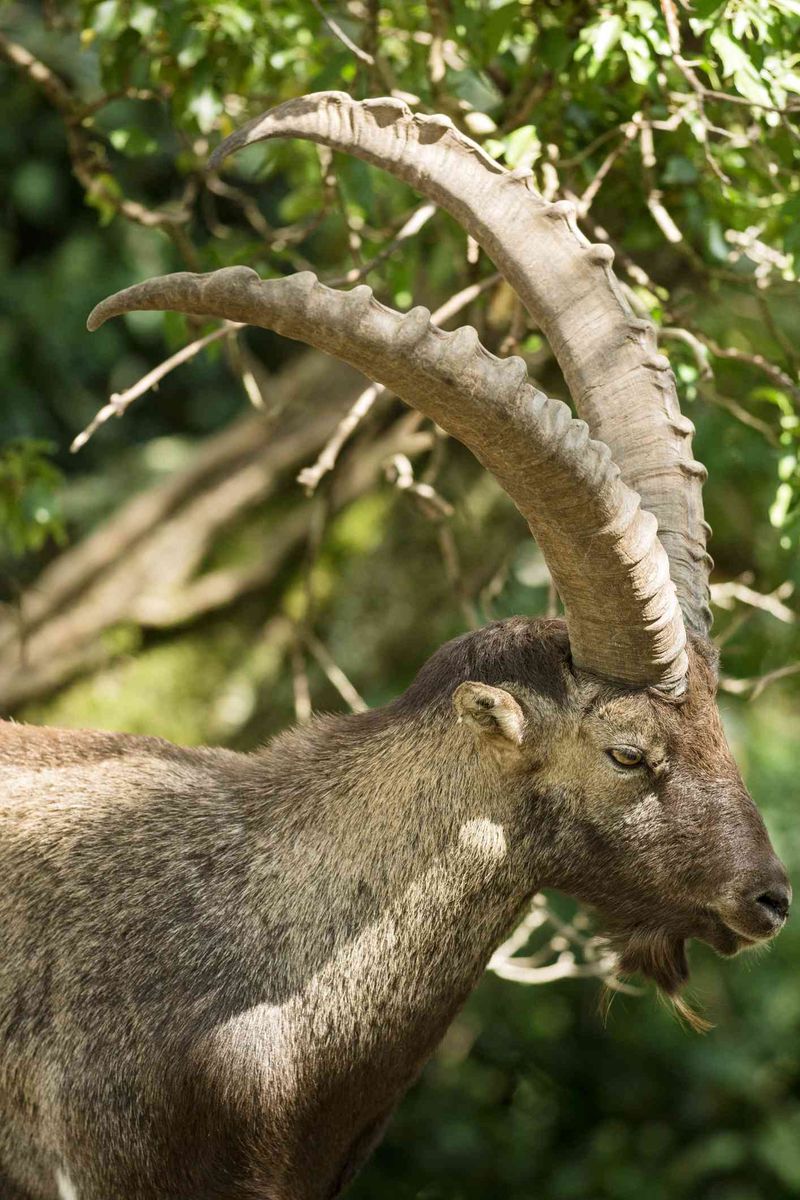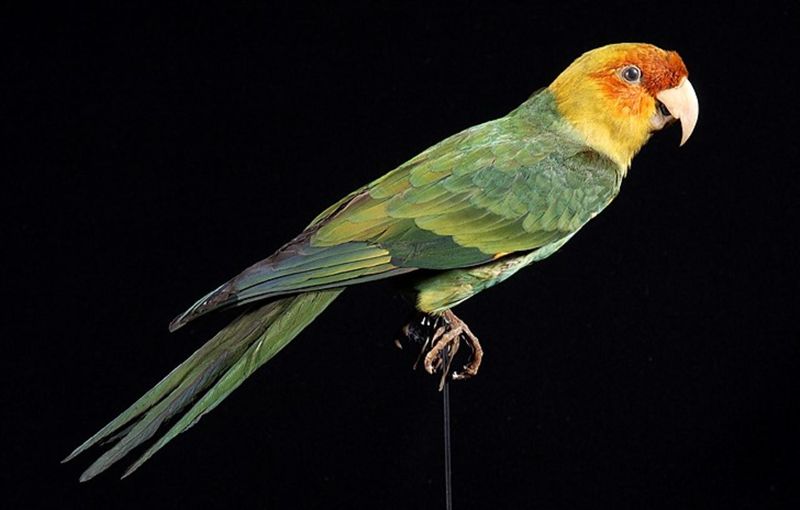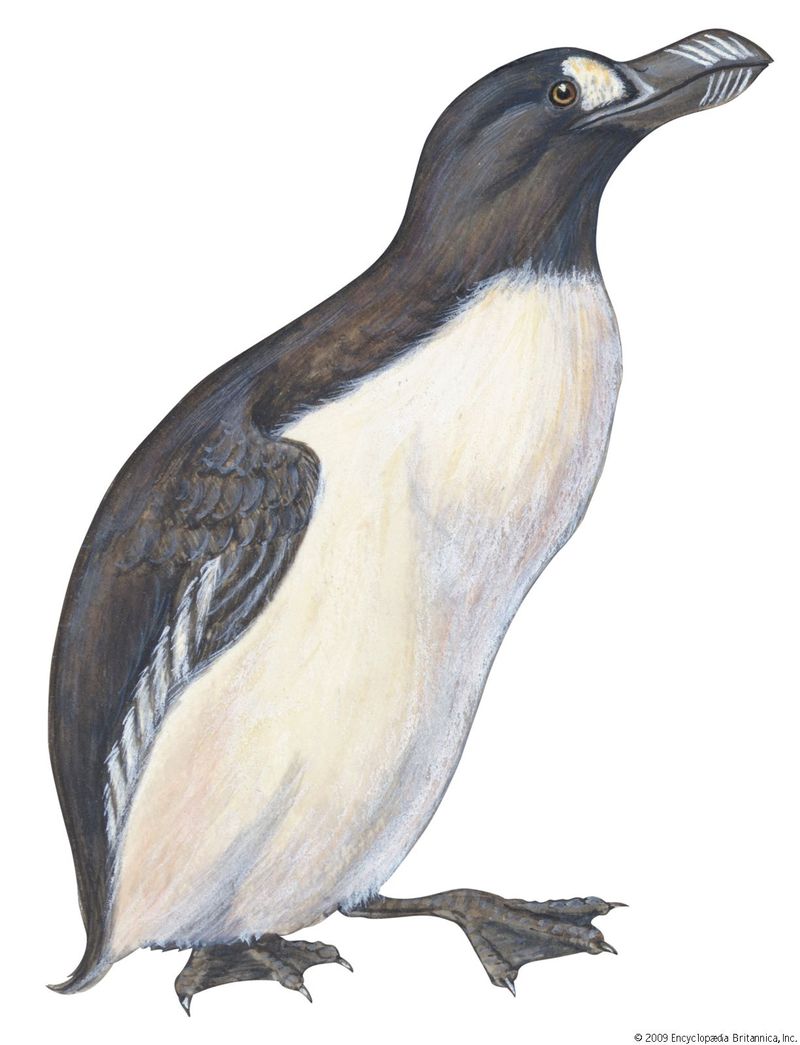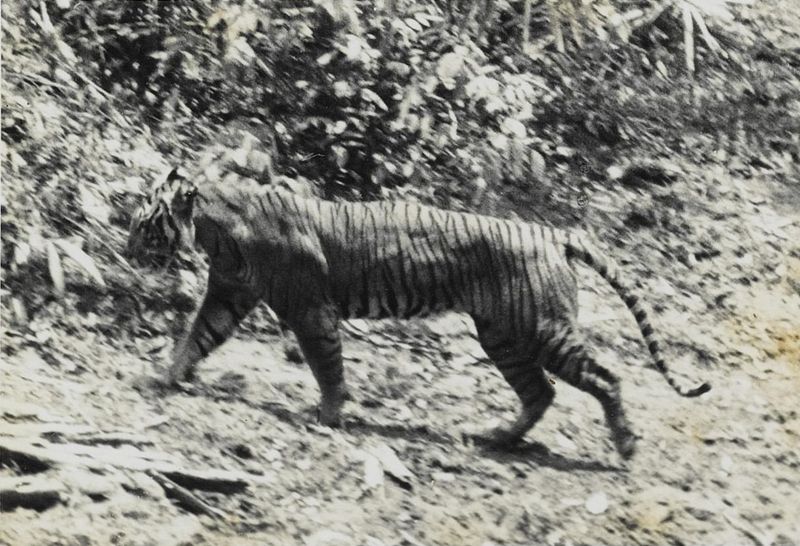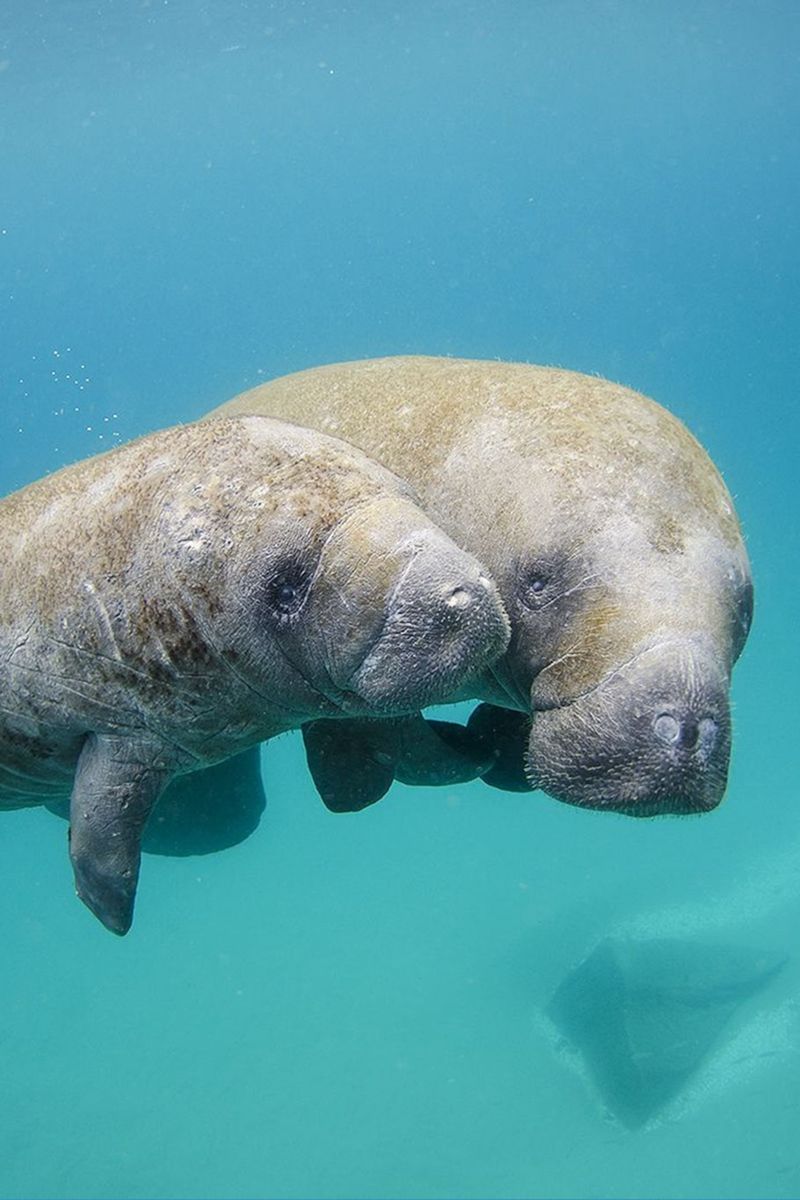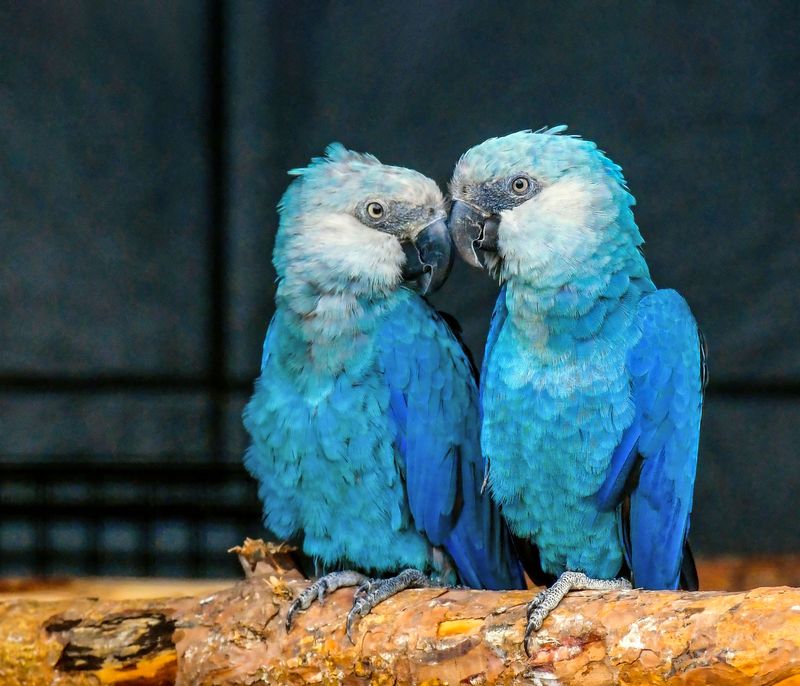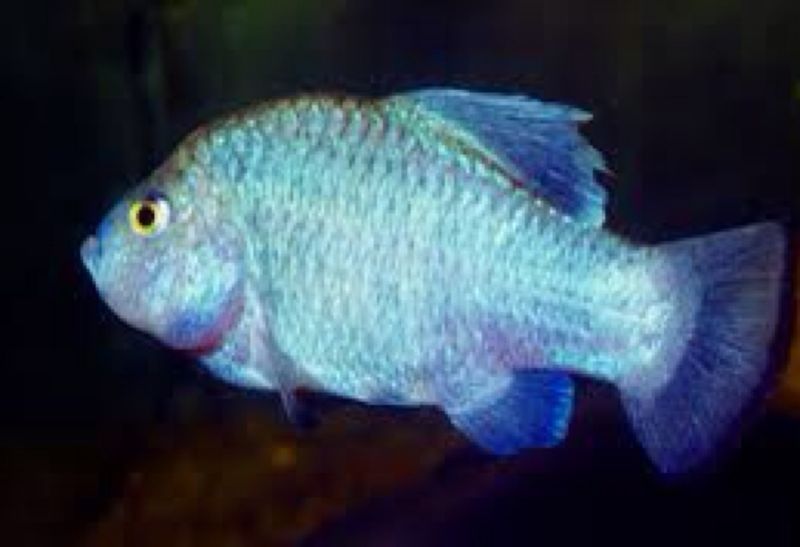Reflecting on our childhood, we often remember the diverse animals that sparked our curiosity and wonder. Sadly, some of those creatures that once roamed the earth are now extinct. In this blog post, we will explore twelve animals that were part of our world growing up but have since vanished. Let’s take a walk down memory lane and honor these magnificent creatures.
Passenger Pigeon
The Passenger Pigeon was once a symbol of abundance in North America, with flocks so massive they darkened the sky. These birds were known for their swift flights and communal living.
Sadly, relentless hunting and habitat destruction led to their extinction by the early 20th century. The last known Passenger Pigeon, named Martha, died in captivity in 1914.
Their story is a stark reminder of the impact humans can have on wildlife, urging us to cherish and protect the biodiversity we still have today.
Tasmanian Tiger (Thylacine)
The Tasmanian Tiger, or Thylacine, was a unique marsupial native to Tasmania. Its wolf-like features and striped back made it an iconic yet misunderstood creature.
Human activities, including hunting and habitat destruction, led to its extinction in the 1930s. The last known Thylacine died in captivity at the Hobart Zoo in 1936.
This fascinating animal’s extinction highlights the fragility of island ecosystems and the dire consequences of human intervention.
Baiji Dolphin
The Baiji Dolphin, also known as the Yangtze River Dolphin, was a freshwater species native to China’s Yangtze River. Its gentle demeanor and nearly blind eyesight were characteristic features.
Industrialization and pollution in the river led to its extinction in the early 2000s. Despite conservation efforts, no Baiji Dolphins have been spotted since 2002.
Their disappearance emphasizes the urgent need for environmental protection and sustainable development in industrial regions.
Western Black Rhinoceros
The Western Black Rhinoceros was a magnificent species native to Africa, known for its robust frame and prominent horn. It was a symbol of strength and resilience.
Poaching for its horn and loss of habitat caused its decline, leading to its extinction in 2011. Conservation efforts came too late for this species.
The Western Black Rhino’s fate underscores the urgent need for concerted global efforts to combat wildlife poaching and habitat destruction.
Pyrenean Ibex
The Pyrenean Ibex was a graceful mountain goat native to the Pyrenees between France and Spain. Its agility and striking curved horns made it a sight to behold.
Overhunting and habitat loss led to its extinction in 2000. A cloning attempt in 2003 briefly revived the species but ended in failure.
The Pyrenean Ibex’s story is a poignant example of how scientific advancement alone cannot replace natural conservation efforts.
Golden Toad
The Golden Toad was a vivid amphibian found in the cloud forests of Costa Rica. Its bright orange color was a dazzling sight amid the greenery.
Climate change and habitat destruction led to its extinction in the late 1980s. It serves as an early signal of the environmental changes affecting biodiversity.
Conservationists use the Golden Toad as a symbol to advocate for climate action and habitat preservation to prevent further extinctions.
Carolina Parakeet
The Carolina Parakeet was the only native parrot species in the eastern United States, known for its vivid green and yellow plumage.
Habitat loss, hunting, and disease contributed to its extinction in the early 20th century. The last known individual died in 1918.
The parakeet’s extinction highlights the importance of preserving natural habitats and the complex interplay between human activities and wildlife.
Great Auk
The Great Auk was a flightless bird native to the North Atlantic. Its penguin-like appearance and awkward waddle made it a unique marine bird.
Overhunting for its feathers and meat led to its extinction in the mid-1800s. The last confirmed sighting was in 1844.
The Great Auk’s demise serves as a cautionary tale about the consequences of unregulated hunting and the need for protective legislation.
Javan Tiger
The Javan Tiger was a smaller tiger subspecies native to the Indonesian island of Java. Its stealth and striking coat marked its presence in the dense jungles.
Deforestation and hunting drove it to extinction in the 1970s. The Javan Tiger’s disappearance emphasizes the need for habitat protection and anti-poaching measures.
Its loss is a sobering reminder of the fragility of island wildlife and the impact of human encroachment.
Stellar’s Sea Cow
Stellar’s Sea Cow was a massive marine mammal that once inhabited the cold waters of the Bering Sea. Known for its gentle nature, it was a relative of the manatee.
Within 27 years of its discovery in 1741, overhunting led to its extinction. It serves as an example of the rapid impact humans can have on vulnerable species.
The sea cow’s extinction underscores the need for sustainable practices in both hunting and habitat protection.
Spix’s Macaw
Spix’s Macaw, native to Brazil, was renowned for its striking blue plumage and charismatic personality. It became a symbol of rare beauty in the wild.
Habitat destruction and illegal trapping led to its extinction in the wild by 2000. Captive breeding programs continue in hopes of reintroduction.
The plight of Spix’s Macaw highlights the importance of habitat conservation and the potential for human-led recovery efforts.
Tecopa Pupfish
The Tecopa Pupfish was a small, resilient fish that thrived in the warm springs of California’s Mojave Desert. Its adaptability was its hallmark.
However, habitat alteration due to human development led to its extinction in the early 1980s. It remains a poignant example of the delicate balance in aquatic ecosystems.
The Tecopa Pupfish’s story urges us to consider the impacts of development on vulnerable habitats and species.
